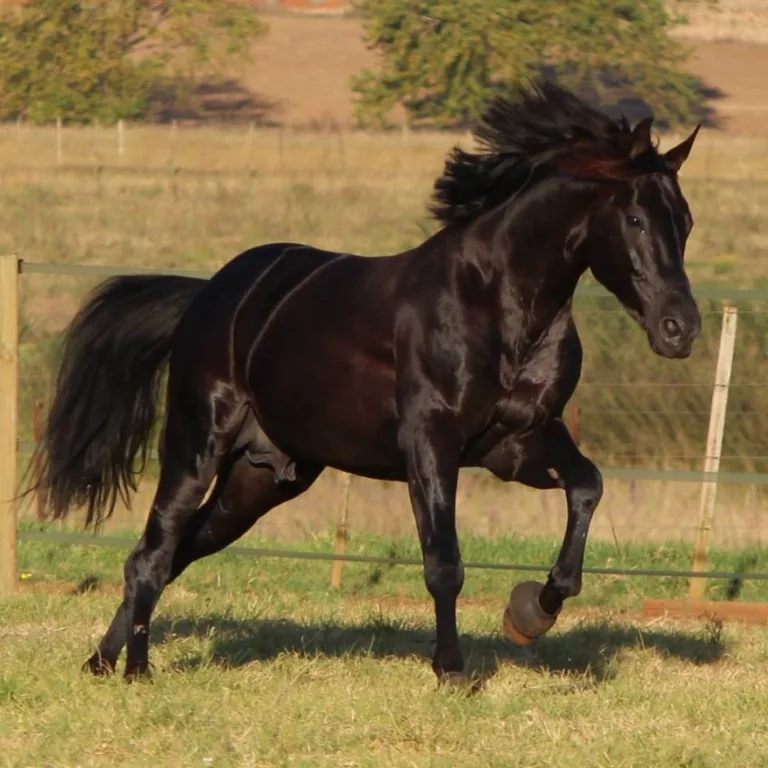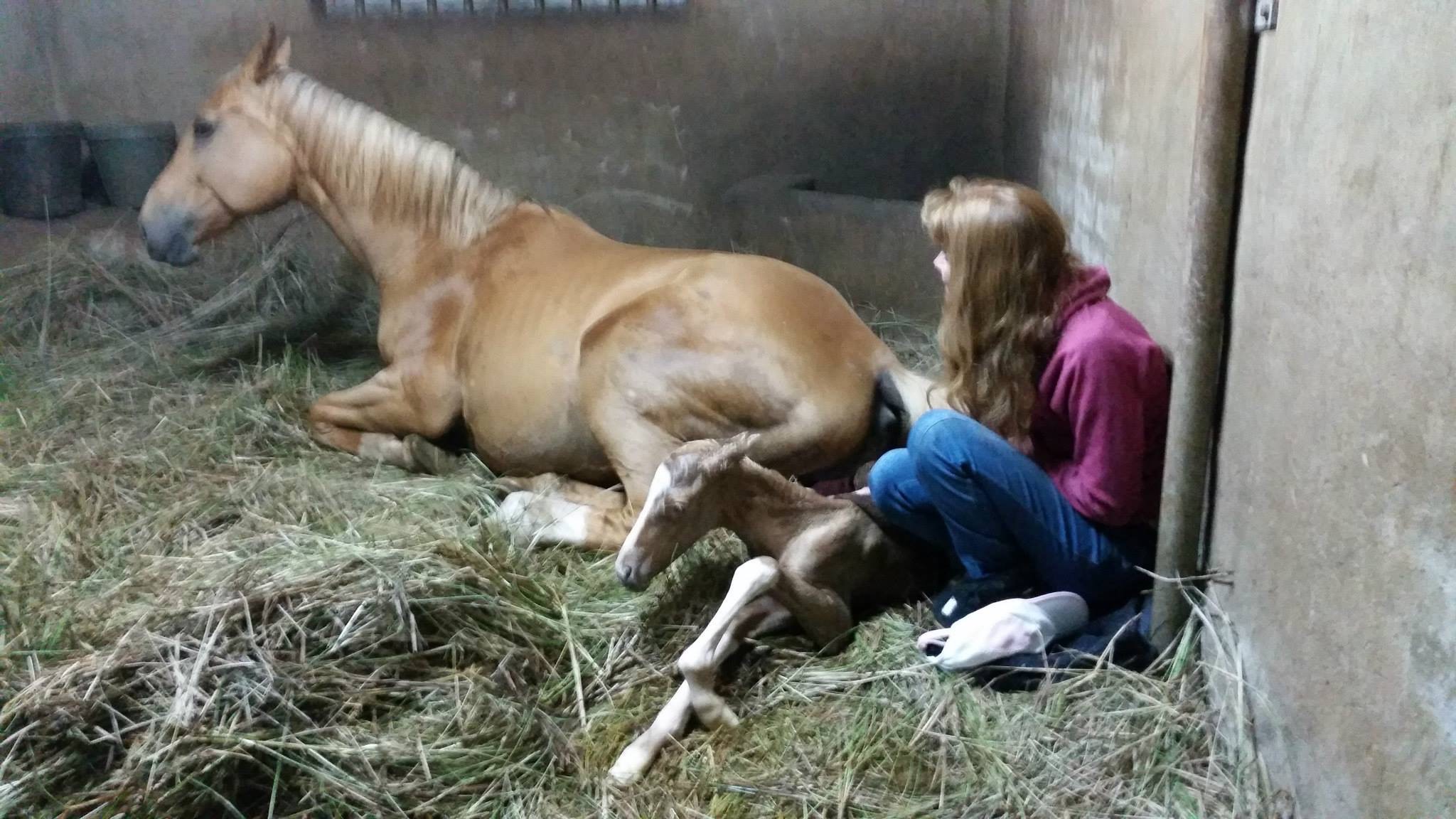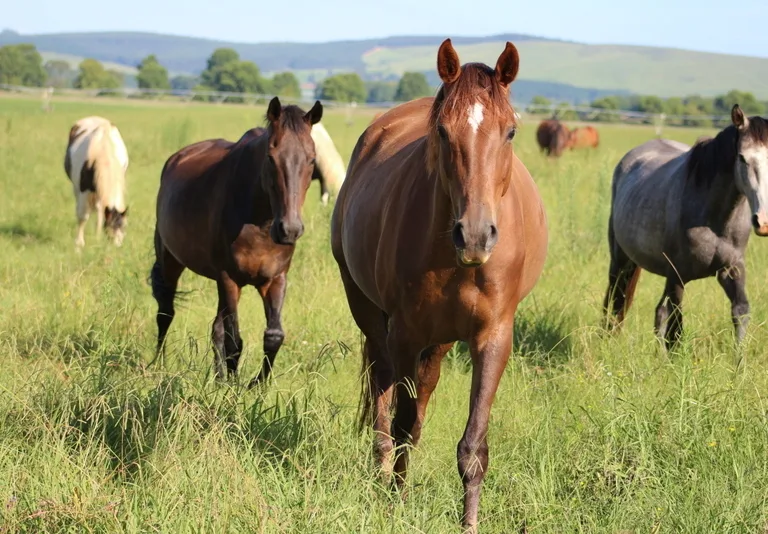Understanding Equine Viral Arteritis (EVA) in Stallions: Risks, Management, and Prevention
Equine Viral Arteritis (EVA) is a viral respiratory and reproductive disease that can have a significant impact on the equine population, particularly stallions. This section provides a brief overview of EVA, highlights its significance in stallions, and outlines the potential impact on reproductive health. Additionally, it sets the purpose of the blog as an educational resource for horse owners, aiming to deepen their understanding of EVA, including its transmission, clinical signs, and preventive strategies.
Brief Overview of Equine Viral Arteritis (EVA)
Equine Viral Arteritis is caused by the Equine Arteritis Virus (EAV), a member of the Arterivirus family. This contagious disease primarily affects horses, including both domesticated and wild equids. EAV primarily targets the respiratory and reproductive systems, making it a concern for breeding operations. The virus is primarily transmitted through respiratory secretions, including nasal discharge and aerosolized particles. It can also spread through venereal transmission during breeding, which is a key factor in its impact on stallions and reproductive health.
Significance of EVA in Stallions and its Potential Impact on Reproductive Health
Stallions play a crucial role in the equine breeding industry, and EVA can have profound implications for their reproductive health. Key points to highlight include:
- Venereal Transmission: EVA is notorious for its ability to be transmitted through semen during natural breeding or artificial insemination. This makes stallions important carriers of the virus, potentially spreading it to mares during mating.
- Potential for Persistent Infection: Some stallions can become persistent carriers of the virus, serving as long-term reservoirs. This raises concerns about the inadvertent spread of EAV, even in the absence of apparent clinical signs in the carrier stallion.
- Impact on Fertility: EVA can lead to temporary infertility in stallions, affecting sperm production and quality. Additionally, infection in pregnant mares can result in abortion, stillbirth, or the birth of weak foals.
The primary purpose of this article is to empower horse owners with knowledge about EVA, its implications for stallions, and the steps they can take to prevent and manage the disease. It aims to:
- Educate on Transmission: Provide insights into how EVA spreads, emphasizing the importance of understanding the modes of transmission to implement effective preventive measures.
- Highlight Clinical Signs: Discuss the clinical signs of EVA in stallions, enabling horse owners to recognize potential infections early and seek veterinary intervention.
- Explore Preventive Strategies: Delve into vaccination options, biosecurity measures, and routine testing protocols that can aid in the prevention and management of EVA.
- Encourage Collaboration with Veterinarians: Stress the importance of a collaborative relationship between horse owners and veterinarians in developing tailored health management plans for stallions and breeding programs.
In essence, this article seeks to empower horse owners with the knowledge and tools necessary to safeguard the reproductive health of stallions and mitigate the impact of Equine Viral Arteritis within their equine communities.
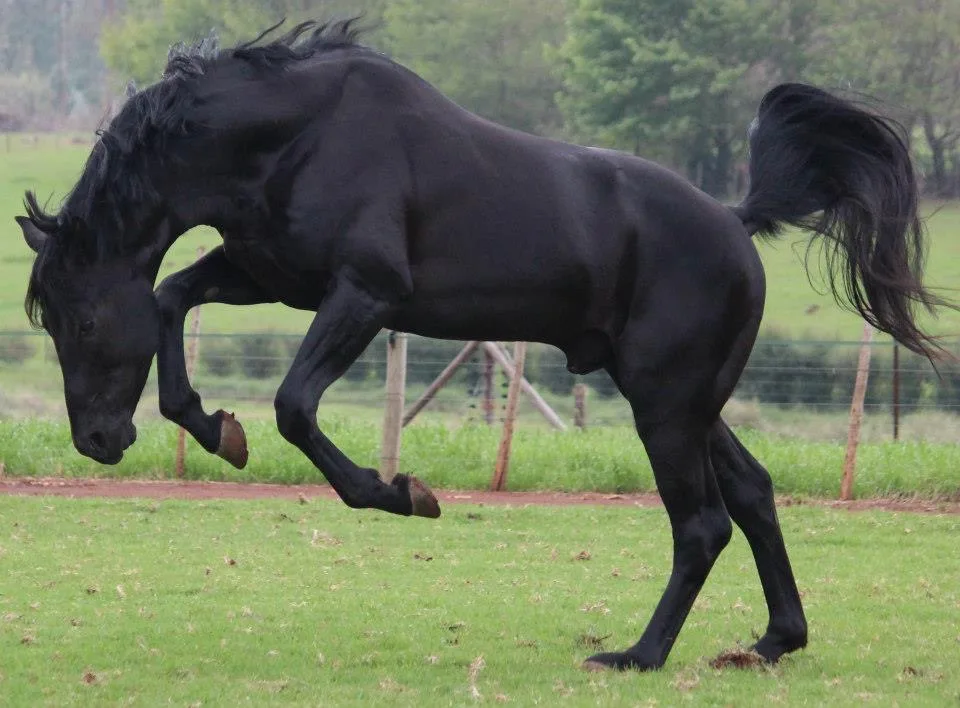
What is Equine Viral Arteritis (EVA)?
Equine Viral Arteritis (EVA) is a contagious viral disease affecting horses, caused by the Equine Arteritis Virus (EAV), a member of the Arterivirus family. Understanding the fundamental aspects of EVA is crucial for horse owners to implement effective preventive measures and manage its impact on equine reproductive health.
- Definition of EVA and its Causative Agent:
- Equine Viral Arteritis is a viral infection characterized by respiratory and reproductive manifestations. The causative agent, Equine Arteritis Virus (EAV), is an RNA virus that primarily targets endothelial cells lining the blood vessels. This viral infection can lead to a spectrum of clinical signs, ranging from mild respiratory symptoms to more severe complications, particularly in the reproductive system.
- Modes of Transmission in Stallions and Mares:
- Respiratory Transmission: EAV is highly contagious and primarily spreads through respiratory secretions. Infected horses can release the virus into the environment through nasal discharges and respiratory droplets, creating a risk for transmission to susceptible horses.
- Venereal Transmission: One of the distinctive features of EVA is its ability to be transmitted venereally, especially during natural mating or artificial insemination. Stallions that have recovered from EVA can become carriers and shed the virus in their semen. Infected semen is a significant source of EAV transmission to mares during breeding.
- Contact Transmission: Direct and indirect contact with contaminated surfaces, equipment, or clothing can also contribute to the spread of EAV. Horse owners should be cautious about shared equipment and implement effective biosecurity measures to minimize the risk of transmission.
- Overview of the Impact on the Equine Reproductive System:
- Abortion and Fetal Infection in Mares: EVA poses a particular threat to pregnant mares, as the virus can lead to abortion, stillbirth, or the birth of weak foals. Fetal infection can occur if a mare is exposed to the virus during pregnancy.
- Temporary Infertility in Stallions: Stallions infected with EVA may experience a temporary decrease in fertility. The virus can affect sperm production and quality, leading to reduced conception rates. Persistent carrier stallions, in particular, can continue to shed the virus in their semen, posing a risk to mares during breeding.
- Risk of Persistent Carrier State: Some stallions can become persistent carriers of EAV, meaning they continue to harbor the virus in their reproductive tract for an extended period. Identifying and managing persistent carriers is crucial for preventing the inadvertent spread of EAV within the equine population.
Understanding the modes of transmission and the impact on the reproductive system is essential for horse owners to implement targeted preventive measures. In the following sections, we will delve into clinical signs, diagnostic methods, treatment, and strategies for preventing and managing EVA in stallions.
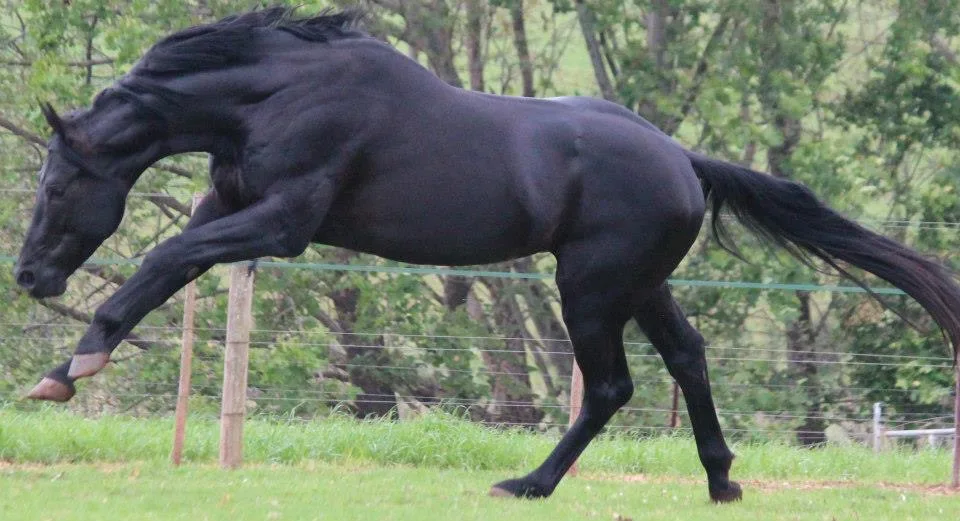
Clinical Signs and Manifestations in Stallions
Equine Viral Arteritis (EVA) can present with a range of clinical signs in stallions, varying in severity. Recognizing these signs is crucial for early detection, intervention, and the implementation of biosecurity measures to prevent the spread of the virus.
- Common Clinical Signs Exhibited by Stallions with EVA:
- Fever: Stallions infected with EVA may develop a fever, often as an initial response to the viral infection. Monitoring body temperature can be a valuable diagnostic indicator.
- Nasal Discharge: Respiratory symptoms are common in EVA. Infected stallions may exhibit nasal discharge, which can vary from clear to mucopurulent (containing mucus and pus).
- Conjunctivitis: Inflammation of the conjunctiva, the membrane lining the inner surface of the eyelids and the whites of the eyes, can occur in some cases. This can result in redness and discharge from the eyes.
- Depression and Inappetence: Infected stallions may show signs of depression, lethargy, and a reduced interest in food. Changes in behavior and activity levels may be observed.
- Edema (Swelling): Some stallions may develop swelling, particularly in the lower limbs and the scrotum. This can be associated with vasculitis, an inflammation of blood vessels caused by the virus.
- Variability in the Severity of Symptoms:
- Mild or Subclinical Cases: EVA can manifest as mild or subclinical infections in some stallions, where clinical signs are minimal or not apparent. Subclinical carriers, while not showing obvious symptoms, can still shed the virus, contributing to the potential spread of EAV.
- Moderate to Severe Cases: In other instances, stallions may exhibit more severe symptoms, including high fever, pronounced respiratory signs, and marked depression. The severity of clinical signs can vary widely among individual horses.
- Asymptomatic Carriers: Some stallions, after recovering from the acute phase of the infection, may become asymptomatic carriers. These carriers may not display clinical signs but can shed the virus in their semen. Identifying and managing these carriers is critical for preventing venereal transmission.
- Potential for Persistent Infection and Carrier Status in Stallions:
- Long-Term Shedding: Stallions that become persistent carriers of EAV can shed the virus in their semen for an extended period, potentially for years. This poses a significant risk during breeding activities, as infected semen can lead to the transmission of EAV to mares.
- Identification and Management: Detecting persistent carriers is essential for preventing the spread of EVA. Diagnostic testing, including virus isolation and polymerase chain reaction (PCR) assays, can be employed to identify carriers. Management strategies may include quarantine, testing, and biosecurity measures to prevent contact with susceptible horses.
Understanding the range of clinical signs, the variability in symptom severity, and the potential for carrier status in stallions is essential for horse owners and veterinarians in effectively managing and preventing the spread of Equine Viral Arteritis. Early detection and appropriate biosecurity measures are key components of mitigating the impact of EVA in equine populations.
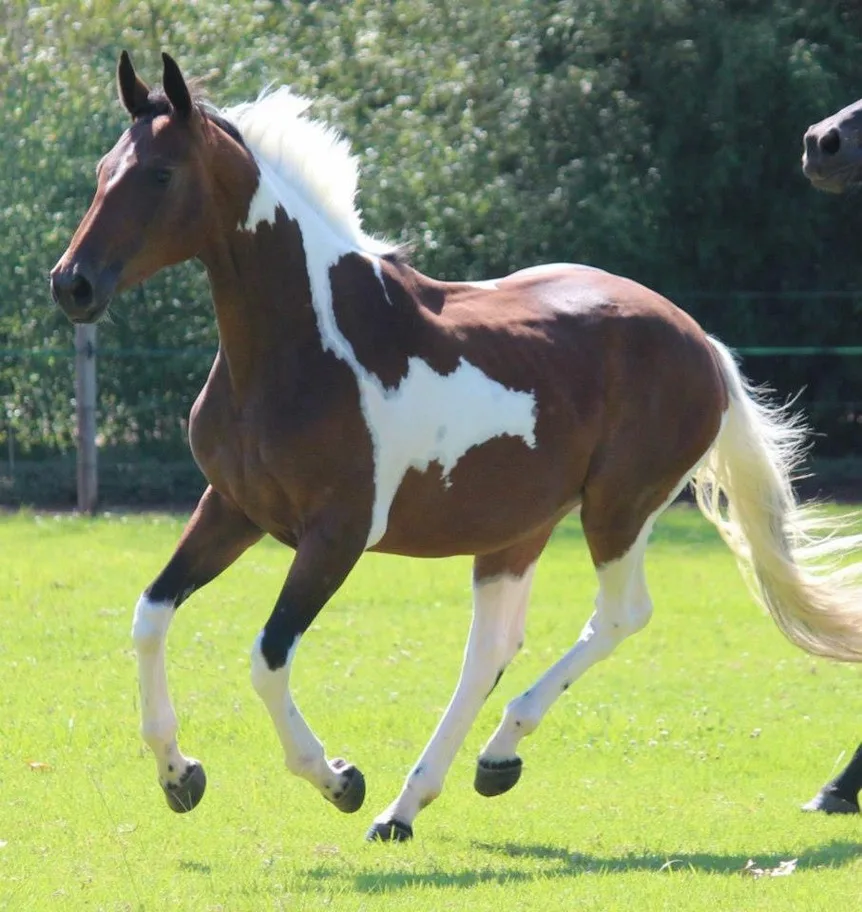
EVA in Mares
Equine Viral Arteritis (EVA) in mares poses specific challenges, particularly during pregnancy and breeding activities. Understanding the impact on pregnant mares, the potential risks of abortion, and considerations for breeding to EVA-positive stallions is crucial for effective management.
- The Impact of EVA on Pregnant Mares and Their Foals:
- Abortion and Stillbirth: EVA can lead to abortion in pregnant mares, especially during the acute phase of the infection. The virus has a tropism for the placenta, which can result in placental damage and compromise fetal viability. Some mares may carry the infection to term, but foals may be born weak or with congenital abnormalities.
- Risk of Stillbirth: The impact of EVA on fetal health can result in stillbirths, where the foal is born dead. The severity of the impact may vary depending on factors such as the mare’s immune response, the stage of pregnancy during infection, and the strain of the virus.
- Risk of Abortion and the Potential for Fetal Infection:
- Timing of Infection: The timing of EVA infection in pregnant mares is crucial. Infections early in pregnancy can lead to fetal death and resorption, while infections later in gestation may result in abortion or the birth of weak foals.
- Fetal Infection: EAV has been shown to infect the fetus in utero. This can result in viremia (presence of the virus in the bloodstream) in the foal, potentially leading to clinical signs or persistent infection. Foals born to mares infected with EVA may also shed the virus, contributing to disease transmission.
- Congenital Abnormalities: In some cases, EVA infection during pregnancy may lead to the birth of foals with congenital abnormalities. These abnormalities can range from mild to severe and may include respiratory, ocular, or musculoskeletal issues.
- Considerations for Breeding Mares to EVA-Positive Stallions:
- Risk Assessment: When considering breeding mares to EVA-positive stallions, a thorough risk assessment is crucial. This includes evaluating the stallion’s EVA status, the mare’s reproductive history, and the potential impact on the breeding program.
- Testing and Quarantine: Testing stallions for EVA and ensuring that only EVA-negative or vaccinated stallions are used for breeding is a key preventive measure. If a stallion is EVA-positive, strategic breeding management, including quarantine and testing of mares, may be necessary to prevent disease transmission.
- Vaccination Strategies: Vaccination against EVA is an important consideration for preventing infection in mares. Proper vaccination protocols, in consultation with a veterinarian, can contribute to protecting mares from EVA-related reproductive issues.
- Communication and Transparency: Transparent communication between horse owners, breeders, and veterinarians is essential when managing EVA in a breeding program. Disclosing the EVA status of stallions and implementing preventive measures contribute to responsible equine management.
Understanding the impact of EVA on pregnant mares, the associated risks of abortion and fetal infection, and making informed decisions about breeding strategies are vital components of mitigating the consequences of Equine Viral Arteritis in the equine reproductive system. Horse owners and breeders should work closely with veterinarians to develop tailored management plans that prioritize the health and well-being of both mares and foals.

Diagnosing EVA
Accurate and timely diagnosis of Equine Viral Arteritis (EVA) is crucial for implementing effective management strategies and preventing the spread of the virus. This section explores laboratory tests and diagnostic procedures, emphasizes the importance of routine testing for breeding stallions, and underscores the collaborative efforts required between veterinarians and horse owners in the diagnosis of EVA.
- Laboratory Tests and Diagnostic Procedures for Identifying EVA:
- Virus Isolation: Virus isolation involves attempting to grow and identify the virus from samples collected from infected horses. Nasal swabs, blood samples, or semen samples may be used for this purpose. Virus isolation is a definitive method for confirming active infection.
- Polymerase Chain Reaction (PCR): PCR is a molecular technique used to detect and amplify viral genetic material. It is a highly sensitive and specific method for identifying the presence of Equine Arteritis Virus (EAV) in various samples, including blood and semen.
- Serology (Antibody Testing): Serological tests detect antibodies produced by the horse’s immune system in response to EAV. Enzyme-Linked Immunosorbent Assay (ELISA) and Virus Neutralization (VN) tests are commonly used for serological diagnosis.
- Clinical Signs and History: Clinical signs, along with the horse’s history, can provide valuable clues for diagnosis. However, relying solely on clinical signs may be challenging, as some horses, especially stallions, can be asymptomatic carriers.
- Importance of Routine Testing, Especially for Breeding Stallions:
- Preventive Health Management: Routine testing for EVA is essential, particularly for breeding stallions, to ensure the early detection of the virus. Preventive health management plans should include regular testing, especially for horses involved in breeding activities.
- Minimizing Transmission Risk: Identifying EVA-positive stallions and implementing appropriate measures, such as quarantine and strategic breeding management, helps minimize the risk of virus transmission to mares during breeding.
- Protecting Breeding Programs: Routine testing protects the integrity of breeding programs by preventing the inadvertent spread of EAV. This is especially critical in situations where stallions may be carriers without exhibiting clinical signs.
- Informed Decision-Making: Test results guide informed decision-making for horse owners and breeders. Based on the EVA status of stallions and mares, appropriate biosecurity measures and breeding strategies can be implemented to safeguard the health of the equine population.
- Collaborative Efforts Between Veterinarians and Horse Owners in EVA Diagnosis:
- Veterinary Expertise: Veterinarians play a central role in EVA diagnosis. Their expertise in selecting appropriate diagnostic tests, interpreting results, and developing tailored management plans is invaluable.
- Communication and Transparency: Open communication between veterinarians and horse owners is crucial for the successful diagnosis and management of EVA. Transparency regarding the health status of horses and adherence to testing protocols contribute to effective disease control.
- Biosecurity Consultations: Collaborative efforts involve veterinarians providing biosecurity consultations to horse owners. This includes guidance on quarantine procedures, testing schedules, and preventive measures to contain the spread of EAV.
- Education and Awareness: Veterinarians contribute to the education and awareness of horse owners about the importance of EVA testing. This collaborative approach fosters a proactive stance in disease prevention.
- In conclusion, a collaborative partnership between veterinarians and horse owners, along with routine testing using various diagnostic methods, is essential for the effective diagnosis and management of Equine Viral Arteritis. Early detection allows for prompt intervention and the implementation of biosecurity measures to protect the overall health of the equine population, particularly in breeding settings.
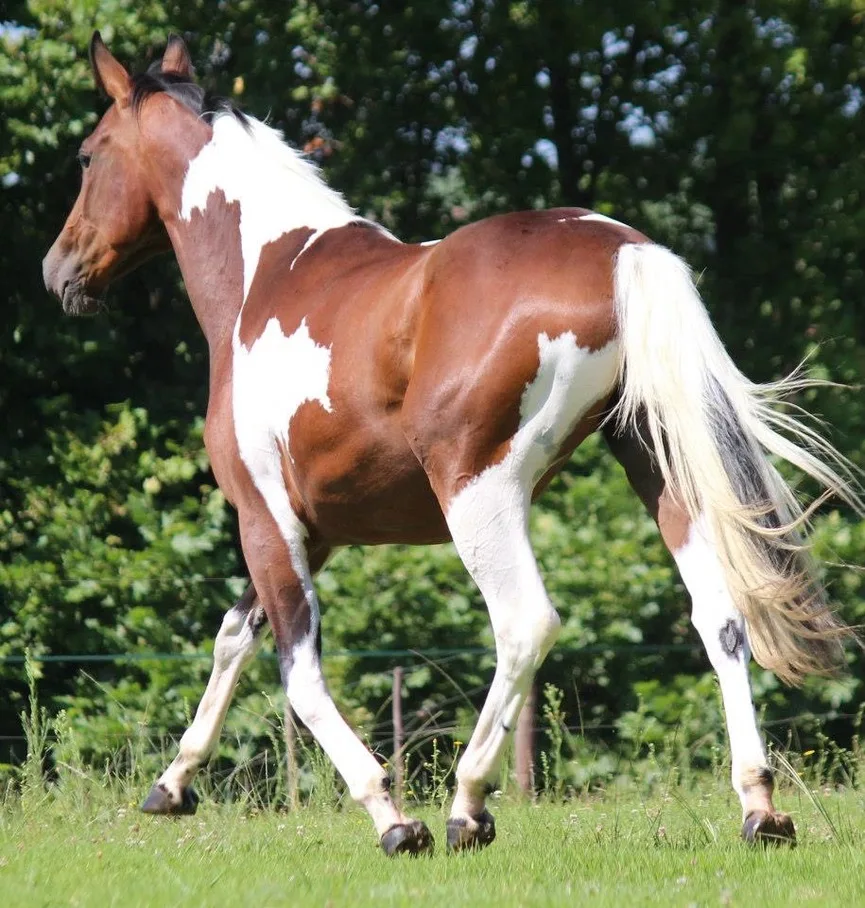
Treatment and Management of EVA
Equine Viral Arteritis (EVA) does not have a specific antiviral treatment, and management primarily focuses on supportive care, minimizing transmission risk, and addressing complications. This section provides an overview of treatment options for stallions diagnosed with EVA, considerations for managing persistent carriers, and emphasizes the importance of biosecurity measures and quarantine protocols.
- Overview of Treatment Options for Stallions Diagnosed with EVA:
- Supportive Care: There is no specific antiviral treatment for EVA, and infected horses are managed symptomatically. Supportive care includes providing a comfortable environment, ensuring proper nutrition, and addressing specific symptoms such as fever and respiratory distress.
- Anti-Inflammatory Medications: Nonsteroidal anti-inflammatory drugs (NSAIDs) may be used to alleviate fever and reduce inflammation. This can improve the overall comfort of the infected horse.
- Fluid Therapy: In cases of severe disease, intravenous fluids may be administered to maintain hydration and support the horse’s overall well-being.
- Isolation: Infected horses, including stallions, should be isolated from susceptible animals to prevent the spread of the virus. This includes separating infected animals from uninfected ones and implementing strict biosecurity measures.
- Considerations for Managing Persistent Carriers:
- Identification: Persistent carriers are stallions that continue to shed the virus in their semen for an extended period. Identification of carriers is crucial for preventing venereal transmission.
- Testing and Monitoring: Persistent carriers should be tested regularly to monitor viral shedding. Polymerase chain reaction (PCR) testing is commonly used for this purpose. Close collaboration with a veterinarian is essential for designing a testing schedule and monitoring plan.
- Quarantine and Biosecurity: Persistent carriers should be kept in strict isolation, and biosecurity measures should be implemented to prevent contact with susceptible horses. This may involve separate facilities, dedicated equipment, and restricted access.
- Strategic Breeding Management: Breeding to a persistent carrier should be approached strategically. In consultation with a veterinarian, decisions can be made regarding the timing of breeding, use of artificial insemination, or the potential use of a carrier stallion in a controlled and monitored breeding program.
- Importance of Biosecurity Measures and Quarantine Protocols:
- Isolation of Infected Horses: Infected horses, both symptomatic and carriers, should be isolated from healthy animals to prevent direct and indirect transmission. This may involve separate barns or pastures and dedicated equipment.
- Restricted Access: Access to areas housing infected horses should be restricted, and individuals caring for infected horses should follow strict biosecurity protocols. This includes the use of protective clothing, boots, and hand hygiene.
- Disinfection Protocols: Regular disinfection of shared equipment, facilities, and common areas is essential to minimize the risk of fomite transmission. Proper disposal of contaminated bedding and manure is also crucial.
- Quarantine for New Arrivals: New horses entering a facility should undergo a quarantine period before being introduced to the resident population. This helps identify and address potential carriers or infections before widespread exposure.
In conclusion, the treatment and management of Equine Viral Arteritis focus on supportive care for symptomatic horses, strategic management of persistent carriers, and strict implementation of biosecurity measures. Collaborative efforts between horse owners and veterinarians are essential to navigate the challenges posed by EVA and protect the health of the equine population.
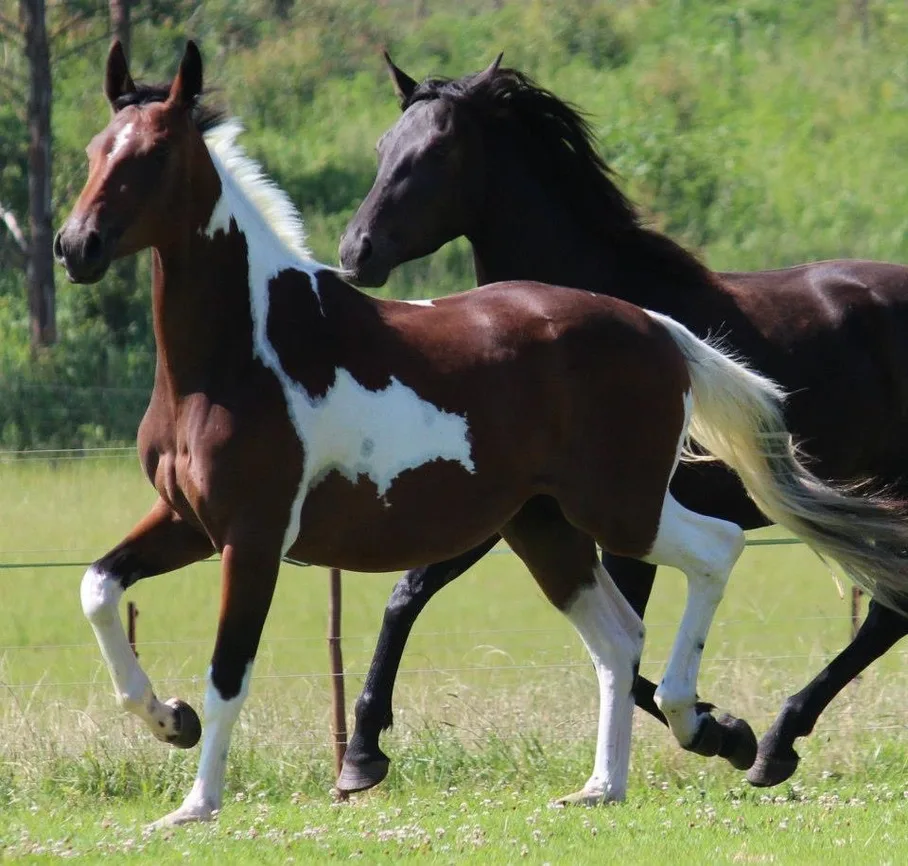
EVA Prevention
Preventing Equine Viral Arteritis (EVA) involves a multifaceted approach that includes vaccination, stringent biosecurity measures, and routine testing. This section elaborates on vaccination options and their role in preventing EVA, outlines biosecurity measures for stallion owners, breeding facilities, and horse transport, and emphasizes the significance of routine testing in breeding programs.
- Vaccination Options and Their Role in Preventing EVA:
- Modified Live Virus (MLV) Vaccines: MLV vaccines are available for EVA prevention. These vaccines contain live, weakened virus strains that stimulate the horse’s immune system to produce a protective response. MLV vaccines are effective in reducing clinical signs and preventing viremia, but caution is needed in their use, particularly in pregnant mares, as they can cause abortion.
- Inactivated (Killed) Virus Vaccines: Inactivated EVA vaccines, which contain killed virus particles, are an alternative for pregnant mares and horses in high-risk situations. These vaccines are considered safe during pregnancy and protect against clinical disease, although they may not prevent viremia entirely.
- Vaccination Protocols: Vaccination protocols should be developed in consultation with a veterinarian and tailored to the specific needs of the horse population. Timing of vaccinations, booster shots, and considerations for breeding schedules are important aspects of an effective vaccination program.
- Importance of Herd Immunity: Implementing a comprehensive vaccination strategy contributes to the development of herd immunity within a population. This reduces the overall risk of EVA transmission and helps protect individual horses, especially during breeding activities.
- Biosecurity Measures for Stallion Owners, Breeding Facilities, and Horse Transport:
- Isolation of New Arrivals: New horses entering a facility, especially stallions, should undergo a quarantine period to detect any potential carriers or infections before being introduced to the resident population.
- Dedicated Facilities and Equipment: Stallions and mares with unknown EVA status should be housed separately from known negative horses. Dedicated equipment, including breeding instruments, should be assigned to each horse or group to minimize the risk of fomite transmission.
- Restricted Access: Access to breeding facilities and areas housing breeding horses should be restricted. Implementing controlled access and using protective clothing and equipment for personnel are critical aspects of biosecurity.
- Disinfection Protocols: Regular disinfection of stalls, equipment, and shared spaces is essential. Disinfectants effective against enveloped viruses, including EAV, should be used according to recommended protocols.
- Monitoring and Surveillance: Regular monitoring and surveillance for clinical signs of EVA are crucial. Prompt identification of any suspected cases allows for rapid intervention and minimizes the risk of disease spread.
- The Significance of Routine Testing for Breeding Programs:
- Testing Stallions for EVA: Routine testing for EVA, especially in stallions involved in breeding activities, is paramount. Testing includes polymerase chain reaction (PCR) and serological tests to identify carriers and determine the EVA status of breeding stallions.
- Strategic Breeding Management: Based on test results, breeding management strategies can be formulated. EVA-negative or vaccinated stallions are preferred for breeding. In the case of a positive stallion, strategic breeding with appropriate biosecurity measures may be considered.
- Testing Mares: Mares should also be tested for EVA, particularly if there is a potential risk of exposure or if breeding to a stallion with an unknown EVA status. Testing helps ensure that mares are free from the virus before breeding.
- Preventing Venereal Transmission: Routine testing and strategic breeding management play a crucial role in preventing venereal transmission of EVA. Identifying and managing carrier stallions, along with implementing testing protocols for mares, contribute to the overall success of a breeding program.
In summary, a comprehensive EVA prevention plan combines vaccination, stringent biosecurity measures, and routine testing. Collaboration with a veterinarian is essential to tailor these strategies to the specific needs and risks of individual horses and breeding programs, ultimately safeguarding the health of the equine population.
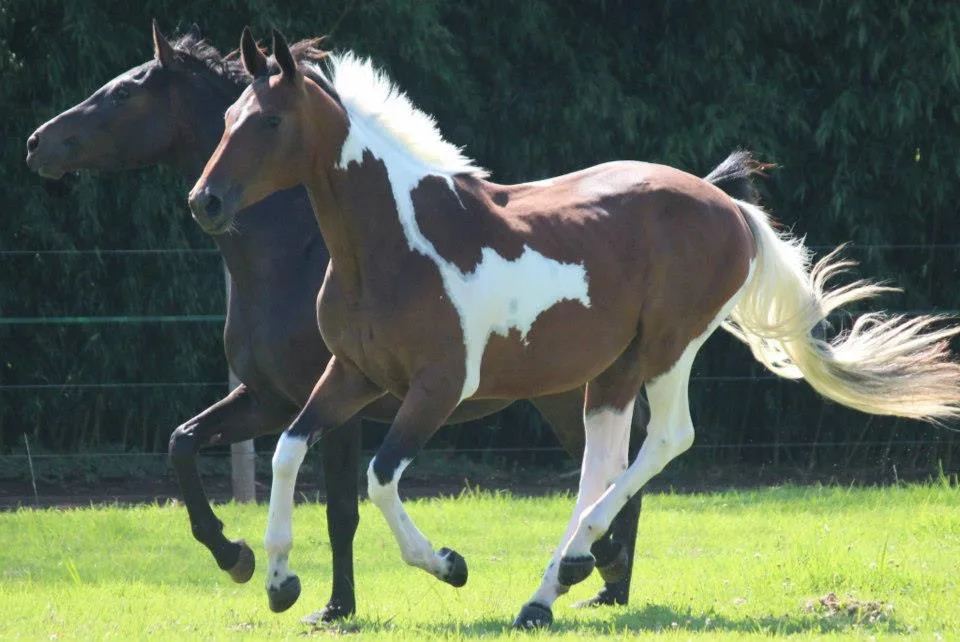
Legal and Regulatory Aspects of EVA
Equine Viral Arteritis (EVA) has legal and regulatory implications, especially concerning horse movement and international trade. Understanding and complying with these regulations are crucial for horse owners, breeders, and those involved in the equine industry. This section delves into the regulatory requirements related to EVA testing for horse movement, the impact of EVA on international horse trade, and the importance of compliance with regulatory standards and documentation.
- Regulatory Requirements Related to EVA Testing for Horse Movement:
- Health Certificates and Testing: Many regions and countries have specific regulations regarding the movement of horses, particularly for breeding purposes. Health certificates issued by accredited veterinarians often include requirements for EVA testing. Horses, especially stallions, may need to undergo testing for EVA before being allowed to move between regions.
- Testing Protocols: Regulatory authorities may specify the types of tests (e.g., PCR or serological tests) that should be conducted and the timing of these tests before horse movement. Understanding and adhering to these testing protocols are essential for compliance.
- Quarantine Requirements: In addition to testing, some regions may impose quarantine requirements for horses entering their jurisdiction. This could involve a period of isolation and monitoring to ensure that the horse is free from contagious diseases, including EVA.
- Documentation Verification: Authorities may scrutinize documentation related to EVA testing and other health-related information. Ensuring that all paperwork is accurate, up-to-date, and meets regulatory standards is crucial for smooth horse movement.
- Impact of EVA on International Horse Trade:
- Trade Restrictions: EVA can have significant implications for the international horse trade. Some countries or regions may impose restrictions on the importation of horses from areas with a known EVA presence. This is particularly true if the horses are intended for breeding purposes.
- Quarantine and Testing Protocols: To facilitate international horse trade, countries often establish standardized quarantine and testing protocols. These protocols are designed to minimize the risk of introducing contagious diseases, including EVA, into a new region.
- Certification Requirements: Exporting horses internationally often require certification from veterinary authorities. This certification may include documentation attesting to the EVA-free status of the horse and adherence to specific testing and quarantine protocols.
- Collaboration Between Countries: Countries engaged in the international horse trade may collaborate to establish harmonized standards for disease control. This collaboration helps maintain the integrity of the equine industry while protecting the health of horses worldwide.
- Compliance with Regulatory Standards and Documentation:
- Responsibility of Horse Owners and Breeders: Horse owners and breeders bear the responsibility of complying with local and international regulations related to EVA. This includes staying informed about the requirements, ensuring that testing is conducted as necessary, and maintaining accurate records.
- Veterinary Guidance: Collaboration with veterinarians is crucial for compliance. Veterinarians can provide guidance on testing protocols, assist in the preparation of documentation, and ensure that horses meet the health standards required for movement or trade.
- Consequences of Non-Compliance: Non-compliance with regulatory standards can have serious consequences, including the refusal of horse entry, quarantine measures, and potential legal actions. It can also impact the reputation of the horse owner or breeder in the industry.
- Continuous Monitoring and Updates: Regulatory requirements may evolve over time, necessitating continuous monitoring of changes in standards and regulations. Staying updated and adapting practices accordingly is key to maintaining compliance.
In conclusion, the legal and regulatory aspects of EVA are integral to the movement and trade of horses, especially for breeding purposes. Horse owners, breeders, and industry professionals must be well-informed, collaborate with veterinary authorities, and adhere to established standards to ensure the health and welfare of horses and maintain the integrity of the equine industry on a global scale.

Case Studies and Real-Life Experiences with EVA
Examining real-life case studies provides valuable insights into the challenges posed by Equine Viral Arteritis (EVA), the strategies employed to manage outbreaks, and the lessons learned by horse owners and industry professionals. This section presents brief case studies illustrating instances of EVA outbreaks and their resolution, along with the preventive strategies implemented by horse owners.
- Case Study 1: Managing an EVA Outbreak in a Breeding Facility:
- Scenario: A breeding facility experienced an outbreak of EVA, affecting both stallions and mares. Several mares aborted, and concerns arose about the potential for venereal transmission among breeding horses.
- Resolution: The facility implemented strict quarantine measures, isolating infected horses and establishing separate areas for unaffected individuals. Testing protocols were intensified, including regular PCR and serological tests. Infected horses were treated symptomatically, and biosecurity practices were enhanced.
- Lessons Learned: The outbreak underscored the importance of early detection and robust biosecurity. The facility revised its breeding management practices, incorporated routine EVA testing into its protocols, and strengthened isolation procedures for new arrivals.
- Case Study 2: EVA Impact on International Stallion Trade:
- Scenario: A well-known stallion, with a significant international breeding career, tested positive for EVA. This raised concerns about the potential impact on the stallion’s breeding activities and the international trade of his offspring.
- Resolution: The stallion was isolated and tested regularly to monitor viral shedding. The breeding facility collaborated with regulatory authorities to establish a controlled breeding program for the stallion. Mares were tested before breeding, and artificial insemination was used to minimize the risk of venereal transmission.
- Lessons Learned: The case highlighted the need for transparency in the industry and the importance of collaborative efforts between breeding facilities and regulatory bodies. The stallion’s positive status prompted a reevaluation of testing protocols for all breeding stallions in the facility.
- Case Study 3: Implementing Preventive Strategies in a Large Equine Operation:
- Scenario: A large equine operation, encompassing breeding, training, and sales, proactively implemented preventive strategies following the identification of EVA in nearby regions.
- Resolution: The operation established a comprehensive vaccination program for all breeding horses, including stallions and mares. Routine testing became a standard practice, and new arrivals underwent a strict quarantine period. Biosecurity measures were enhanced, and educational initiatives were conducted for staff.
- Lessons Learned: The proactive approach demonstrated the importance of a preemptive stance in disease prevention. Regular communication with staff and collaboration with veterinarians contributed to a robust and resilient health management system.
- Case Study 4: EVA Outbreak Linked to Horse Transport:
- Scenario: An EVA outbreak was traced back to the transportation of horses between different facilities. The virus spread rapidly, affecting horses in multiple locations.
- Resolution: Transportation protocols were reassessed, and stricter biosecurity measures were implemented during horse transport. Infected horses were isolated upon arrival at new locations, and testing was conducted before introducing horses to resident populations.
- Lessons Learned: The case highlighted the potential role of horse transport in disease spread. Revised transport protocols and enhanced biosecurity measures during transportation became integral components of the overall disease prevention strategy.
These case studies emphasize the dynamic nature of managing EVA in diverse equine operations. They underscore the need for adaptability, continuous monitoring, and a collaborative approach involving horse owners, veterinarians, and regulatory authorities. By learning from these experiences, the equine industry can refine its strategies to effectively mitigate the impact of EVA and safeguard the health of horses in various settings.
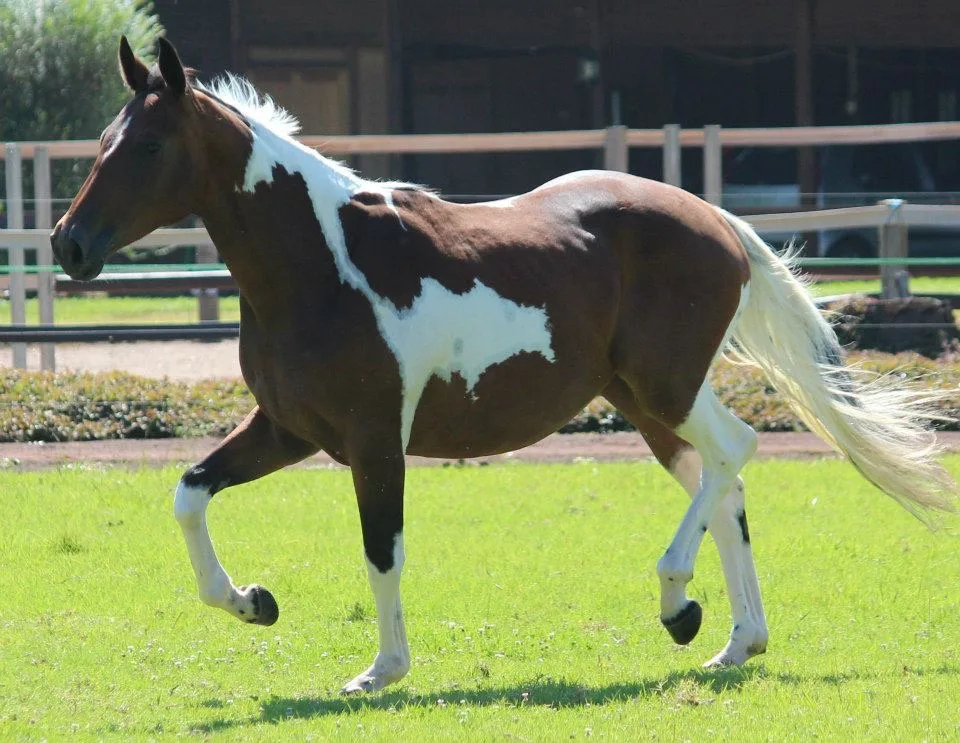
Conclusion
Equine Viral Arteritis (EVA) poses unique challenges, especially in the context of stallions and equine reproductive health. This conclusion recaps key points about EVA in stallions and emphasizes the importance of preventive measures, routine testing, and collaboration with veterinarians. Additionally, it highlights the ongoing role of education in maintaining equine reproductive health.
- Key Points about EVA in Stallions:
- Transmission Dynamics: EVA is primarily transmitted through respiratory secretions and venereal routes. Stallions can become persistent carriers, shedding the virus in their semen for an extended period, posing risks to breeding mares.
- Clinical Signs and Carrier Status: Stallions may exhibit a range of clinical signs during the acute phase of infection, but some may remain asymptomatic carriers. Identifying carrier stallions is crucial for preventing the venereal spread of the virus.
- Impact on Breeding Programs: EVA can have significant implications for breeding programs, leading to abortions in mares, stillbirths, and the birth of weak foals. Strategic breeding management and routine testing are essential components of mitigating these risks.
- Encouragement for Horse Owners:
- Prioritizing Preventive Measures: Horse owners are encouraged to prioritize preventive measures to minimize the risk of EVA within their equine populations. This includes vaccination, strict biosecurity, and adherence to testing protocols.
- Routine Testing: Routine testing, especially for breeding stallions, is a fundamental aspect of EVA management. Identifying infected or carrier stallions early allows for strategic breeding management and minimizes the risk of disease spread.
- Collaboration with Veterinarians: Collaborative efforts between horse owners and veterinarians are essential. Veterinarians play a central role in developing tailored health management plans, interpreting test results, and providing guidance on preventive measures.
- The Role of Ongoing Education:
- Empowering Horse Owners: Ongoing education is crucial in empowering horse owners with the knowledge and skills needed to make informed decisions about equine health. This includes staying informed about the latest developments in EVA management and preventive strategies.
- Training on Biosecurity Practices: Education should encompass training on biosecurity practices, emphasizing the importance of isolation, disinfection, and restricted access to prevent disease introduction and spread.
- Understanding Testing Protocols: Horse owners benefit from a clear understanding of testing protocols for EVA. This includes awareness of the different testing methods available and the implications of test results on breeding decisions.
- Promoting Responsible Horse Management: Ongoing education contributes to promoting responsible horse management practices. This involves transparency in reporting disease incidents, adherence to regulatory requirements, and ethical breeding practices.
In conclusion, EVA management requires a comprehensive and proactive approach from horse owners. By prioritizing preventive measures, routine testing, and collaboration with veterinarians, the equine industry can mitigate the impact of EVA on stallions, mares, and the overall reproductive health of the herd. Ongoing education serves as a cornerstone in fostering a culture of awareness and responsibility, ensuring the well-being of horses and the sustainability of equine breeding programs.
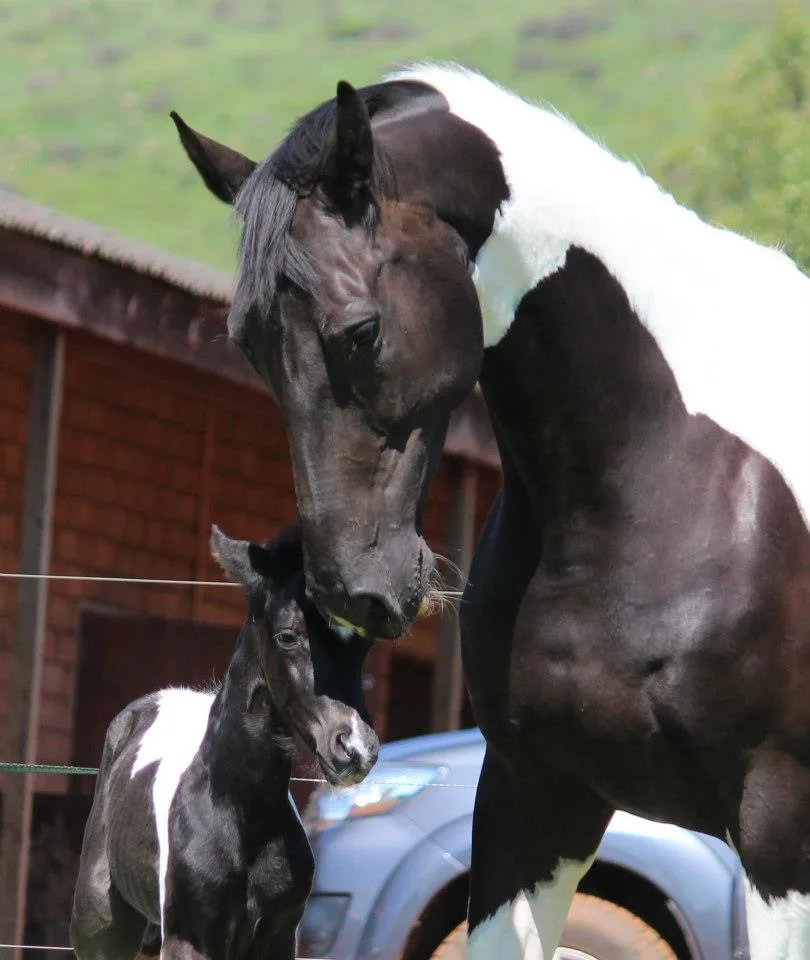
Further Reading and Resources
Equine Viral Arteritis (EVA) is a complex topic, and staying informed is crucial for effective management. Here are some reputable sources, veterinary guidelines, and organizations that provide additional information on EVA:
- American Association of Equine Practitioners (AAEP):
- Website: AAEP
- The AAEP provides resources, guidelines, and educational materials for horse owners and veterinarians. Their infectious disease guidelines may include information on EVA.
- American Veterinary Medical Association (AVMA):
- Website: AVMA
- The AVMA is a valuable resource for veterinary professionals and horse owners. It may offer guidelines and publications related to equine health and infectious diseases.
- World Organisation for Animal Health (OIE):
- Website: OIE
- The OIE provides international standards for animal health and welfare. Their guidelines may include information on EVA and its management.
- United States Department of Agriculture (USDA):
- Website: USDA Animal and Plant Health Inspection Service (APHIS)
- The USDA APHIS provides information on animal health regulations, including those related to disease testing and movement. Check for guidance on EVA.
- State Veterinary Authorities:
- Check with your state’s veterinary authorities or agriculture department for local regulations, testing requirements, and resources related to EVA.
- Veterinary Journals and Publications:
- Explore reputable veterinary journals such as the Journal of Veterinary Internal Medicine, Veterinary Microbiology, and others for scientific articles and research on EVA.
- Local Veterinary Clinics and Universities:
- Consult with local veterinary clinics and universities. They may have access to current research, testing facilities, and experts in equine health.
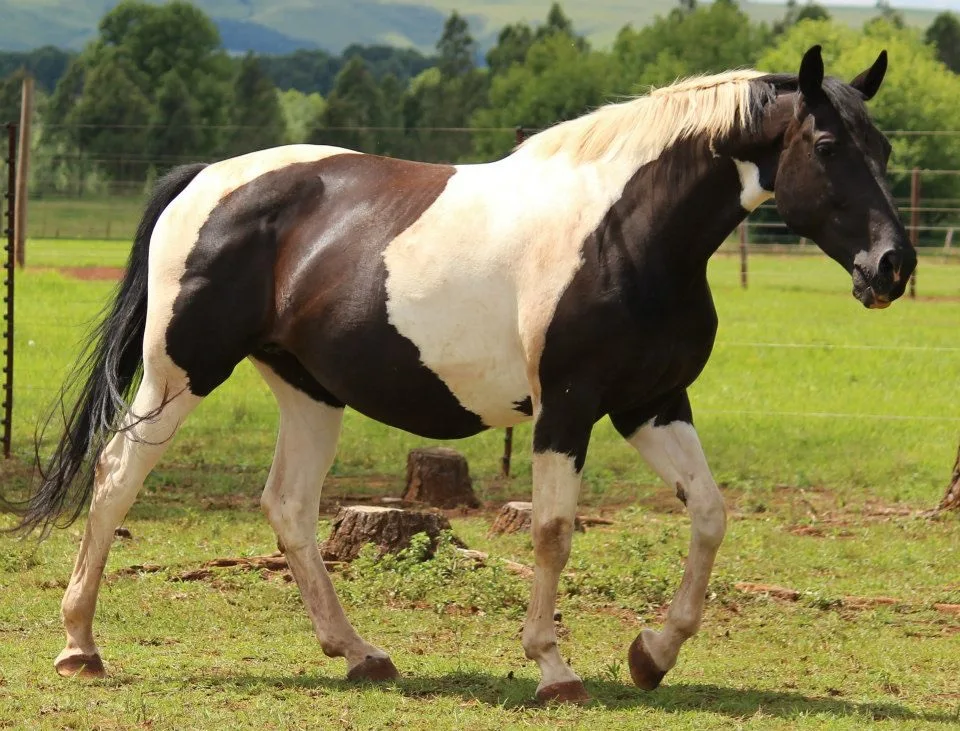
Encouragement for Horse Owners:
- Consultation with Veterinarians: EVA management is best approached in collaboration with a veterinarian. Consult with your veterinarian for personalized advice, testing protocols, and vaccination strategies tailored to your specific circumstances.
- Open Communication: Maintain open communication with your veterinarian regarding the health status of your horses, any travel plans, and changes in the equine population. Transparency facilitates effective disease management.
- Regular Health Check-ups: Schedule regular health check-ups for your horses, including routine testing for EVA, especially if they are involved in breeding activities. Early detection is key to effective management.
- Stay Informed: Keep yourself informed about the latest developments in equine health, including EVA. Attend workshops, webinars, and conferences to stay updated on best practices and emerging research.
- Biosecurity Practices: Implement biosecurity practices recommended by your veterinarian. These may include isolation of new arrivals, disinfection protocols, and restricted access to certain areas to prevent disease spread.
- Collaboration with Industry Experts: Collaborate with industry experts, breeders, and other horse owners. Sharing experiences and knowledge contributes to a collective effort to maintain the health of the equine community.
Remember that each equine operation is unique, and personalized advice from a qualified veterinarian is essential for developing a comprehensive health management plan. By staying proactive, informed, and engaged with veterinary professionals, horse owners play a crucial role in promoting the well-being of their horses and the overall health of the equine community.




